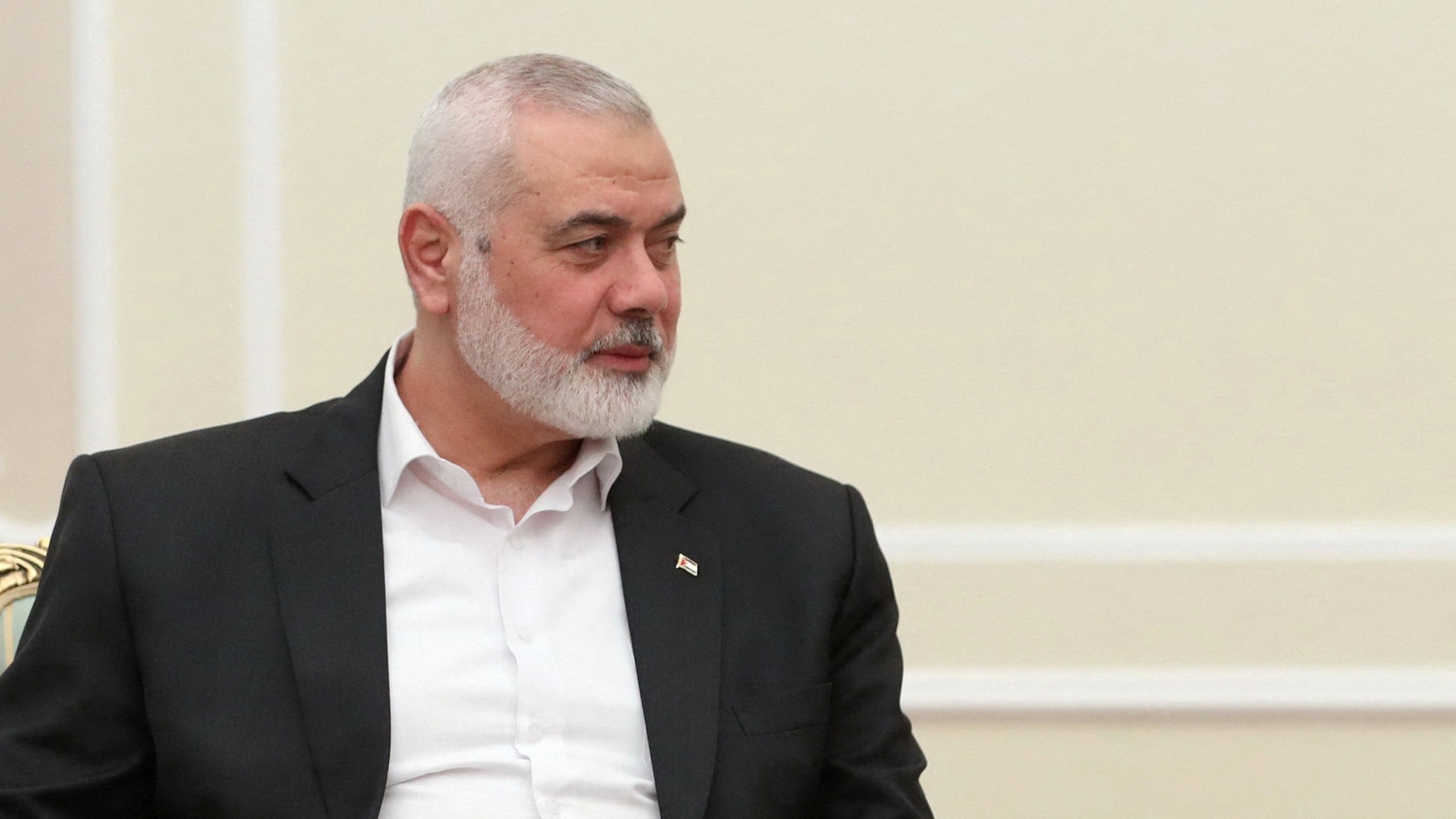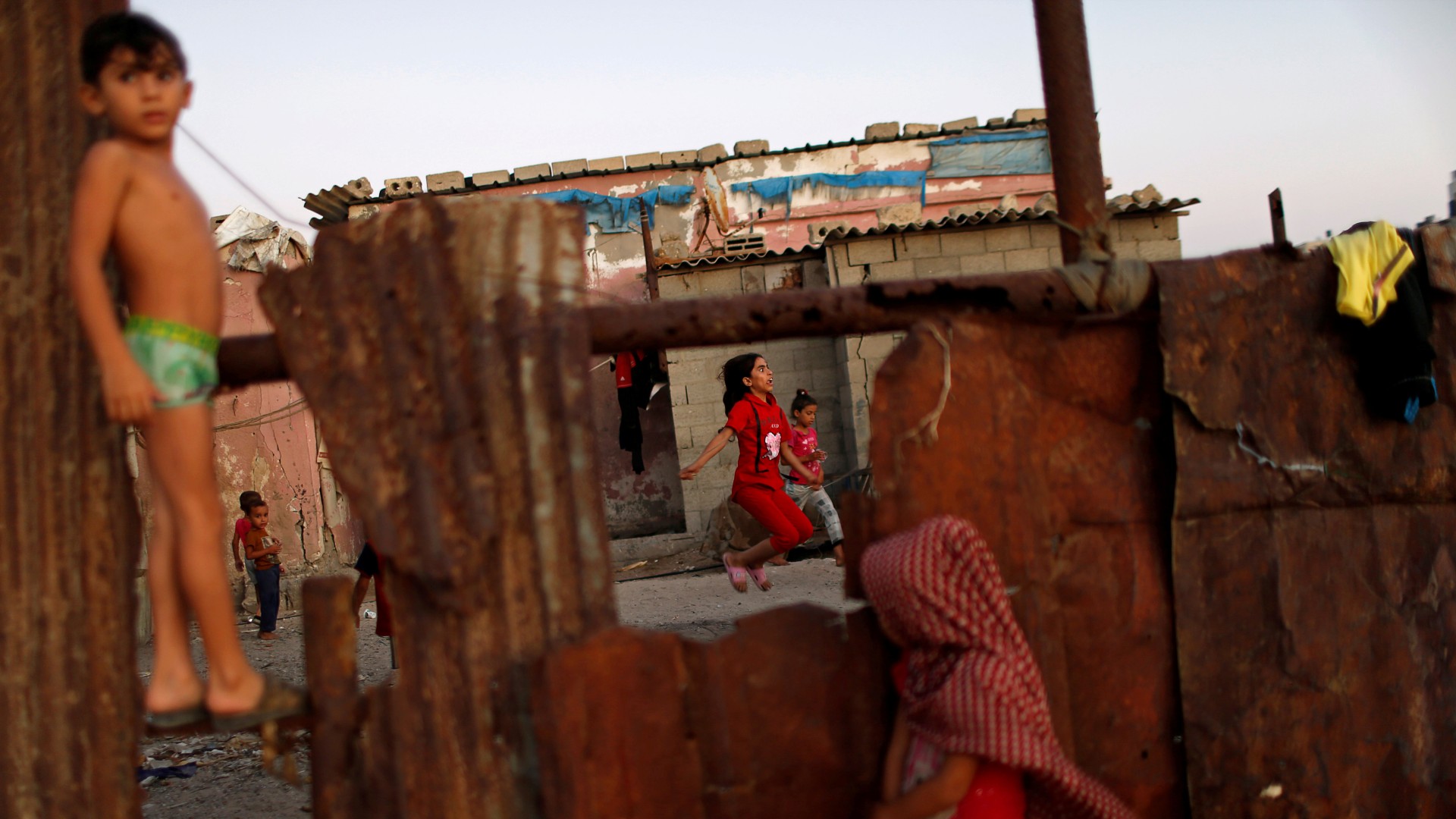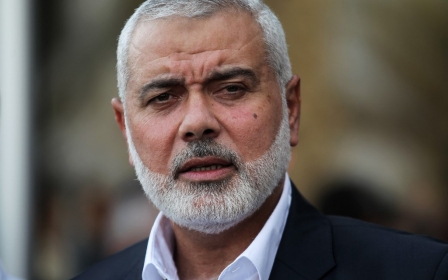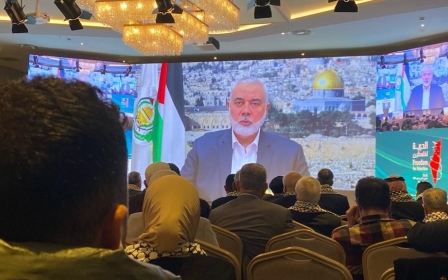Ismail Haniyeh: From a Gaza refugee camp to Hamas leadership

Ismail Haniyeh, who served as the fourth Palestinian prime minister and the third political leader of Hamas, has died at the age of 62.
Hailing from a family of refugees expelled from historic Palestine during the Nakba in 1948, he grew up in northern Gaza's beachside al-Shati refugee camp.
He ascended through the ranks of Hamas, starting as the secretary to the group’s founder, Ahmed Yassin, and eventually leading its political bureau.
In 2006, Hamas won Palestine's most recent legislative elections, and as the movement's top candidate, Haniyeh was tasked with forming a new government, which he led for a year.
His various leadership roles in Hamas made him a target for Israel, which arrested him, expelled him from Gaza and long threatened to kill him.
New MEE newsletter: Jerusalem Dispatch
Sign up to get the latest insights and analysis on Israel-Palestine, alongside Turkey Unpacked and other MEE newsletters
On 31 July, Haniyeh was assassinated in a suspected Israeli strike in Tehran, the capital of Iran, during an official visit.
Where did Haniyeh grow up?
Haniyeh was born in Gaza in 1962 to a family expelled from al-Jura, which today makes up part of the Israeli port city of Ashkelon.
Al-Shati, where he was raised, is one of eight camps for Palestinian refugees established by the United Nations for Palestinians in the aftermath of the ethnic cleansing of Palestine in 1948, known to Palestinians as the Nakba when 750,000 people were forced from their homes during the war that led to the creation of a state of Israel.
He graduated with a degree in Arabic literature from the Islamic University of Gaza, where he became involved in student activism. He had 13 children.
When Hamas was established in 1987, Haniyeh, who was 25 then, was among the group’s young founding members.
In the late 1980s, Israel arrested Haniyeh three times due to his membership in Hamas. His most prolonged imprisonment lasted three years, from 1989 to 1992.
In 1992, Haniyeh was among 415 Palestinian political activists, including senior Hamas leaders, deported by Israel from the Gaza Strip, the West Bank and occupied East Jerusalem to southern Lebanon.
He eventually returned to the Gaza Strip in 1993.
How did Haniyeh rise to Hamas leadership?
Throughout his youth, Haniyeh developed a close relationship with Hamas’s founder and spiritual leader, Ahmed Yassin.
By 1997, after Yassin's release from Israeli prison, Haniyeh became his close personal secretary.
Following the assassinations of Yassin and his successor, Abdel Aziz al-Rantisi, in 2004, Haniyeh became one of the group’s senior leaders.
He was appointed as the movement’s Gaza branch leader in 2007, a role he served until 2017, when he was elected as Hamas's political bureau chief.
In 2019, Haniyeh moved to Qatar to avoid restrictions on his travel from the besieged Gaza Strip.
Haniyeh as Palestinian prime minister
Haniyeh’s rise to political prominence came in 2006 during the Palestinian legislative elections, in which Hamas participated for the first time.
With the group’s political leader at the time, Khaled Meshaal, living abroad, Haniyeh was selected to head the Hamas list in the polls.
After a surprising victory for the group, Mahmoud Abbas, the president of the Palestinian Authority (PA), tasked Haniyeh with forming a new government.
In March 2006, he was sworn in as the fourth prime minister of the PA.
However, his premiership was short-lived, as tensions between Hamas and its political rival Fatah developed into a bloody conflict that split the government into two.
Abbas dismissed Haniyeh from his post in June 2007. However, Hamas rejected the president’s decision.
Haniyeh continued to act as prime minister and de facto ruler of the Gaza Strip, while Abbas appointed a parallel government in the occupied West Bank.
After years of reconciliation talks, Haniyeh relinquished his position in 2014 to a national unity government with Fatah.
He continued to act as Hamas leader in Gaza until 2017, when Yahya Sinwar replaced him.
Haniyeh's assassination in Iran
Haniyeh survived multiple assassination attempts by Israel, including an attack on Yassin in 2003 that wounded his arm.
In 2018, the United States added him to its list of specially designated global terrorists, a decision Hamas dismissed as “ridiculous”.
Following the Hamas-led attack on Israel on 7 October, the prosecutor of the International Criminal Court (ICC) said he was seeking an arrest warrant for Haniyeh over alleged war crimes.
Hamas said the ICC allegations were “full of fallacies, errors and bias in favour of the occupying [Israeli] state”.
During the ongoing war in Gaza, Israeli forces bombed members of Haniyeh's family in the al-Shati refugee camp twice, killing at least three of his sons, two grandchildren, his sister and around 10 other relatives.
On 31 July, he was killed in Tehran, where he was attending the inauguration of the new Iranian president, Masoud Pezeshkian.
His assassination sparked condemnation from Russia, China, Turkey and various Arab and Palestinian parties, including Fatah. Official reactions from Western countries and Israel have so far been muted.
Middle East Eye delivers independent and unrivalled coverage and analysis of the Middle East, North Africa and beyond. To learn more about republishing this content and the associated fees, please fill out this form. More about MEE can be found here.







